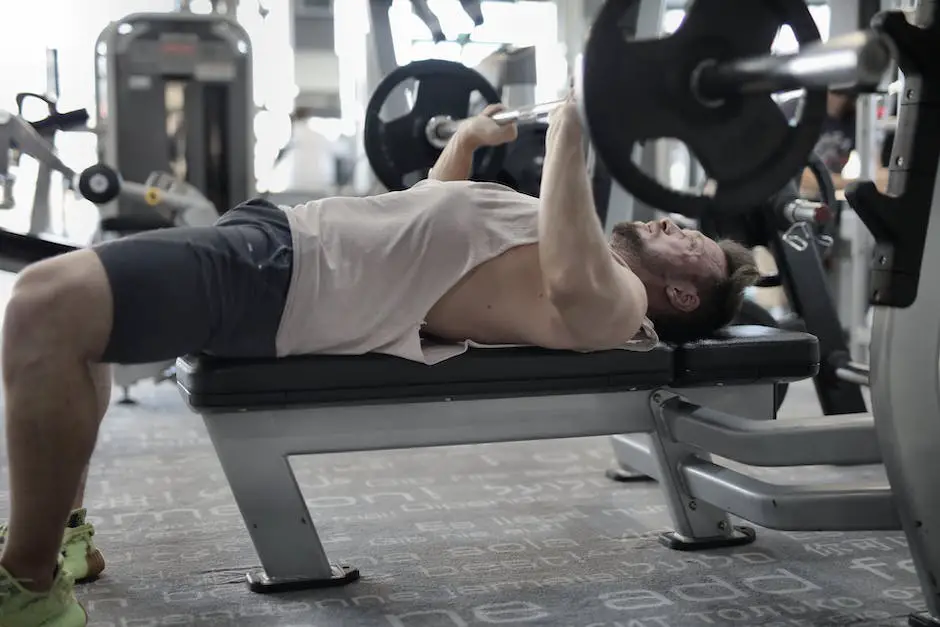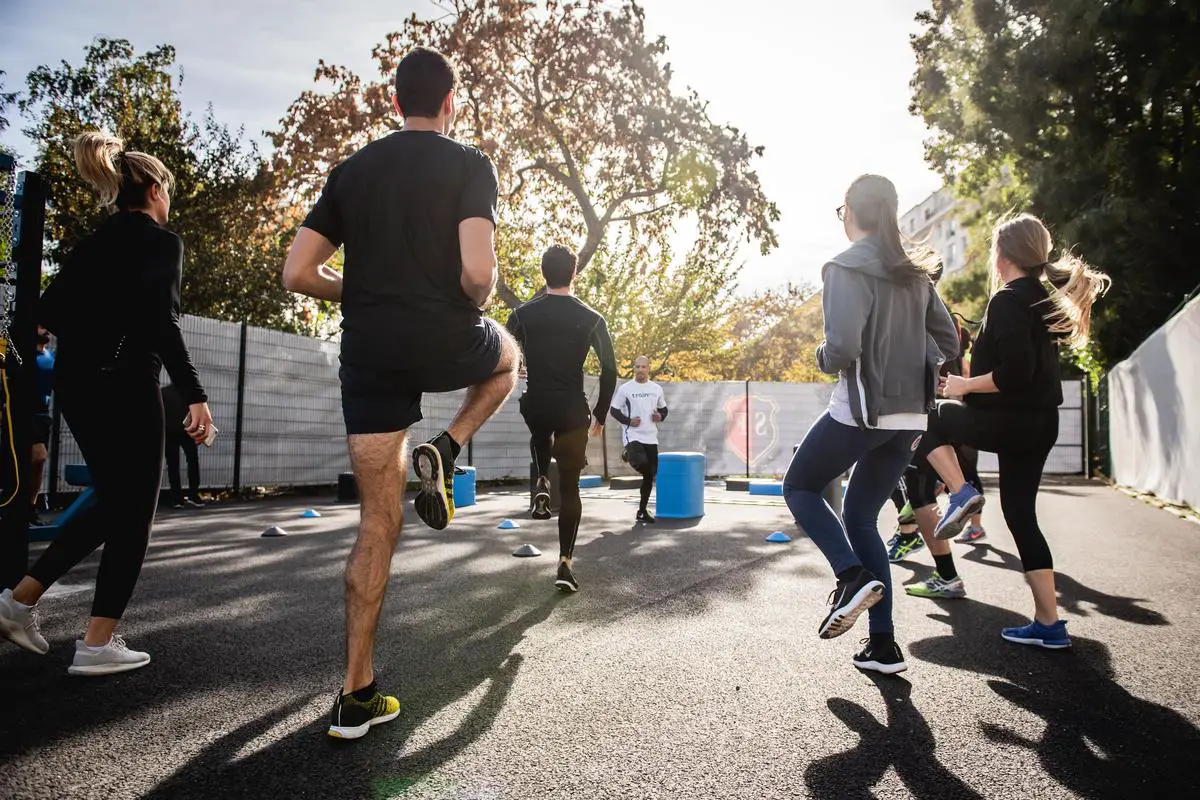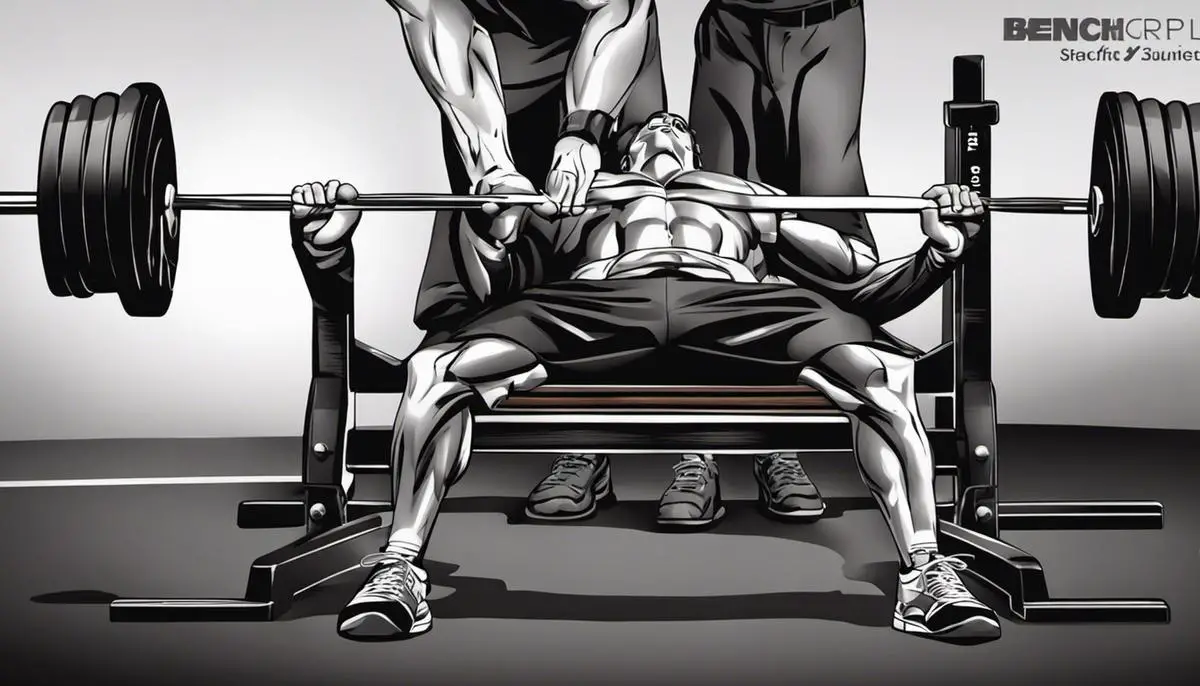The bench press stands as one of the most popular exercises in the fitness industry, synonymous with both upper-body strength and aesthetic. To many, improving their bench press becomes a prime objective, but this act goes beyond just adding more weights to the bar. A perfect blend of a well-honed technique, strength of supporting muscles, nutritional balance and an apt training program becomes key in enhancing one’s bench press capability. Wrapped in this undertaking are the aspects of understanding the correct bench press technique, bolstering the strength of the auxiliary muscles, learning the roles of nutrition and recovery, and constructing a benching training program that fits specifically around your needs and goals.
Understanding the Bench Press Technique
Understanding the Grip for Bench Press Technique
The basis of a proper bench press begins with the correct grip. Hold the barbell with your hands slightly wider than shoulder-width apart, wrapping your thumbs around the bar for a secure hold. The fingers should be positioned on top of the barbell, not underneath. This grip is known as the ‘pronated’ grip. By placing your hands slightly wider than your shoulders, you allow for a more natural angular motion of the press, which helps target the pecs more effectively and reduce strain on your wrists and elbows.
Body Alignment and Position in Bench Press
Body position is another critical factor in bench press technique. Lie flat on the bench with your feet firmly planted on the ground. Your back should not be completely flat against the bench. Instead, keep a natural arch in your lower back, which you can achieve by tightening your glutes and retract your shoulder blades. This positioning not only helps you generate more power but also protects your spine. Your eyes should be under the bar and your head, shoulders, and buttocks should make contact with the bench during the whole lift.
Breathing and Bracing for Bench Press
Proper breathing is a part of bench press technique that often goes overlooked. Inhale deeply as you lower the bar to your chest, and exhale forcefully as you push the weight upward. Bracing your core like you are about to be punched in the gut can help to create tension. This tension is known as intra-abdominal pressure which can stabilize your lower back and allow you to lift heavier.
Balancing the Weight During Bench Press
In bench press, it’s crucial to balance the weight properly across both hands. The barbell should be lowered in a controlled manner to the middle of your chest. When pushing it up, aim for a vertical path – don’t push it towards your face or your feet. This generates more force and leverages your body position better.
Learning from Study Materials
In addition to these instructions, spend some time studying from charts, videos, and other descriptions. Pay attention to the way experienced lifters position their bodies, control the barbell, and stabilize their core. These resources will provide an array of tips and techniques that will help you understand the subtle mechanics of the bench press, leading to gradual improvements over time.

Strengthen Supporting Muscles
Understanding the Key Supporting Muscles
Bench press primarily targets chest muscles, but other muscle groups, such as triceps, shoulders, and back, also play a crucial role in the movement and strength of the lift.
Triceps, being the primary mover in the press, stabilize the elbows and extend the forearm. The shoulders, specifically the anterior deltoids, help to stabilize the movement and contribute to pressing the bar. The back muscles provide a stable base of support and prevent injury.
Building Triceps Strength
Tricep strength is vital in increasing your bench press strength. Incorporate tricep-specific exercises into your routine like tricep dips, tricep pushdowns, and close-grip bench presses. These exercises target your triceps directly and turn them into more effective secondary muscles during a bench press.
Strengthening Shoulders
To improve the strength of your shoulders, incorporate military presses, lateral raises, and reverse flyes into your routine. By strengthening the anterior deltoids, you can improve your stability and control when bench pressing.
Developing Back Strength
To enhance your bench press, your middle and lower back need to be strong to serve as a solid base. Exercises like deadlifts, bent-over rows, and pull-ups can strengthen your back muscles. This strength enables you to maintain proper position and to stabilize your body during the bench press, preventing potential injuries and improving your overall strength.
Incorporating Compound Exercises
Compound exercises like pull-ups, deadlifts, and squats are crucial for full-body strength and remain essential for a balanced fitness routine. These exercises engage numerous muscles at once, which can lead to increased strength and muscle mass.
Recovery and Rest
To enhance strength and growth, your muscles need time to recover. A good night’s sleep and proper nutrition help in this recovery. Rest days allow your muscles to repair and grow, effectively improving the strength and performance of your bench press.
Consistency is Key
Much like any exercise routine, consistency is critical in improving your bench press. To ensure you’re continually progressing and improving, make sure to consistently increase the weight or reps in your bench press routine. Keep track of your progress and adjust your workout plans accordingly to continue to challenge your muscles.

Nutrition and Recovery
Protein: The Building Block
Protein plays a pivotal role in building muscles. It contains amino acids, which are the building blocks of muscles. Men looking to improve their bench press should try to consume about 1-1.5 grams of protein per pound of body weight. Quality protein can be obtained from sources such as lean meats, eggs, dairy, and plant-based proteins like lentils and beans. Protein supplements like whey and casein can also be included in the diet for quick and easy protein sources.
Carbs: Fuel for the Workout
Carbohydrates provide the necessary energy for workout sessions. Consuming carbs before your bench press sessions can offer the fuel you need to perform optimally. After a workout, carbs can help in quick recovery and reducing muscle soreness by replenishing glycogen stores. Good sources of carbs include whole grains, potatoes, fruits, and vegetables.
Healthy Fats: The Energy Reserve
Healthy fats are crucial for overall hormone production and can act as a slow-digesting energy source. Be sure to get a good balance of omega-3 and omega-6 fatty acids in your diet, found in foods like fish, nuts, seeds, and vegetable oils.
Hydration: The Cornerstone of Performance
Being hydrated enhances performance, endurance, and recovery. Water plays a significant role in your body’s metabolism and helps in the transportation of nutrients. For men working on their bench press, it’s critical to stay hydrated before, during, and after workout sessions to maintain optimal performance and prevent dehydration-induced fatigue or muscle cramps.
Sleep: The Repair Phase
Sleep is when most of your body’s recovery processes kick into high gear, repairing muscle tissue, and reinforcing memory associated with motor skills (like bench pressing). Aim for 7-9 hours of quality sleep per night. Good sleep enhances muscle recovery and growth, which result in improvement in bench press strength over time.
Active Rest: Keep the Momentum
Active rest days involve light physical activity, which helps in muscle recovery without halting the momentum gained by regular workouts. Instead of completely staying away from the gym, you could engage in light cardio, stretching, or yoga. These lower intensity activities facilitate increased blood flow to the muscles, aiding in faster recovery and preparing them for the next session of intense lifting. This approach can greatly assist in improving your bench press.
By incorporating these fundamentals into your lifestyle, you’ll set the stage for consistent improvement in your bench press while minimizing the risk of injury and fatigue.

Photo by gabinvallet on Unsplash
Designing a Training Program
Designing a Benchmark Training Program
The first step towards improving your bench press is designing a solid training program. Start by setting realistic, concrete goals. It’s good to aim high, but remember to keep your expectations achievable. This could be a specific weight target or a certain number of sets and reps. Write your goals down, and remember to regularly review and adjust them as you progress.
Implementing Progressive Overload
Next, incorporate the principle of progressive overload into your workout regimen. This means gradually increasing the stress placed upon your body during training. It’s the most effective way to ensure continuous strength and muscle gains. You could do this by gradually increasing the weight you lift, the number of repetitions, or sets each week. Remember, the aim is to challenge yourself, but not to the point of causing injury.
Incorporating Accessory Workouts
In addition to the bench press, your training program should include accessory workouts. These exercises will supplement your bench press by targeting muscles involved in the lift, such as the triceps, shoulders, and back. Examples of effective accessory exercises include the Overhead Press, Tricep Pushdown, and Bent-Over Row.
The Role of Nutrition
A successful training program goes beyond just lifting weights. Your nutrition plays an essential role in muscle recovery and growth. A proper diet will allow you to train more effectively, recover faster, and enhance your performance. Ensure that your diet is rich in proteins to aid in muscle recovery and growth, carbohydrates for energy, and healthy fats for hormonal regulation.
Implementing Recovery Techniques
An overlooked yet crucial aspect of any training program is the recovery period. After stressing your muscles during training, they need time to recover and grow. Make sure you are getting enough sleep, staying hydrated, and eating properly. Additionally, include planned deload periods where you decrease your training intensity to let your body recover fully.
Monitoring Your Progress
Lastly, keep track of your progress. Use a training log to record the weights, sets, and repetitions for each workout. This will not only help you stay motivated but also alert you of any plateaus or dips in performance. It can be a great indicator of when to change your workout routine or incorporate new exercises.

Photo by johnarano on Unsplash
Progress in your bench press journey is more than just a game of numbers; it’s a summation of learning, adapting, and constant evolution. Mastering the art of the bench press technique, harnessing the power of the tricep, shoulder, and back muscles, fueling and reparative practices through apt nutrition and recovery plans, and a personalized training regime are crucial pneumatics in this machine of improvement. Beyond the strength and aesthetic it builds, improving your bench press performance is a testament to your commitment, discipline, and overall growth in your fitness journey.
